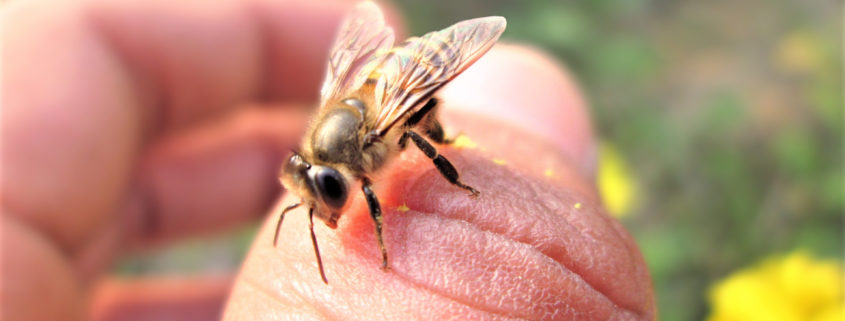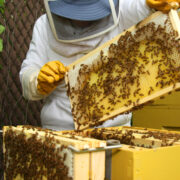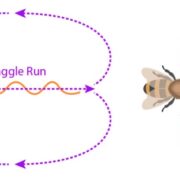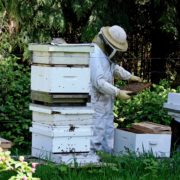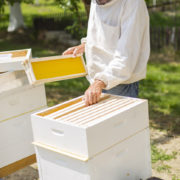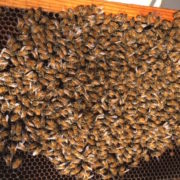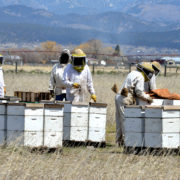What Happens When a Honeybee Stings?
One of the anxieties for almost all new beekeepers is being stung, and while it’s a valid concern, it’s one that experienced beekeepers hardly think about. When it comes down to it, getting stung is inevitable. If you participate in beekeeping, you will eventually experience a bee sting – probably more than once. The sooner that you embrace and accept this inevitability, the more comfortable you will become.
So what exactly happens when a honeybee stings?
A honeybee stinger is hollow and barbed in shape, meaning once the stinger goes in, it doesn’t come out – it’s stuck and embedded into the skin. The real damage happens when the honeybee attempts to remove its stinger. When the bee pulls away, it leaves its stinger behind, along with its venom sack, and other internal structures – ripping them violently from the bee’s body and ultimately killing the honeybee.
There’s a method to this madness believe it or not – and it’s not so great for the person, or animal, on the receiving end. The muscles attached to the bees’ venom-filled sac continue to work the stinger in deeper, increasing the amount of venom being released with each passing minute. If you’ve been stung, you’ll want to remove the stinger as quickly as possible, but be sure to scrape the stinger away – don’t pull it out. Pulling the stinger out requires you to squeeze the venom-filled sac, which ends up pumping even more venom into your body.
A sting will cause immediate pain at the site that will last for several minutes while becoming red and flush. The site may begin to swell, however, the rate and severity of swelling will vary case by case. Luckily, there are many ways to help minimize the effects of a sting. To help reduce pain and itching, apply ice to the area. You can also take an antihistamine like Benadryl to help with itching and suppress the overall reaction.
Each person reacts differently to being stung, and while most people have little to no reaction at all, occasionally the effects can be serious. There are two kinds of reactions to bee stings – normal and anaphylactic. Normal reactions, while often painful and uncomfortable, are of far less concern than the other type of reaction – anaphylactic. The majority of people, fortunately, experience normal reactions to bee stings.
Unfortunately, a small group of individuals may experience anaphylactic reactions to bee stings. Anaphylactic reactions are systemic reactions, meaning that areas of the body far removed from the actual sting respond adversely. For example, a person experiencing an anaphylactic response to a sting will sometimes experience difficulty breathing and speaking due to swelling of the tongue or throat, itchy, red hives, dizziness, nausea, and vomiting, or even loss of consciousness. An anaphylactic reaction is an extremely dangerous situation that can potentially lead to death. People experiencing an anaphylactic reaction need to seek immediate medical attention.

